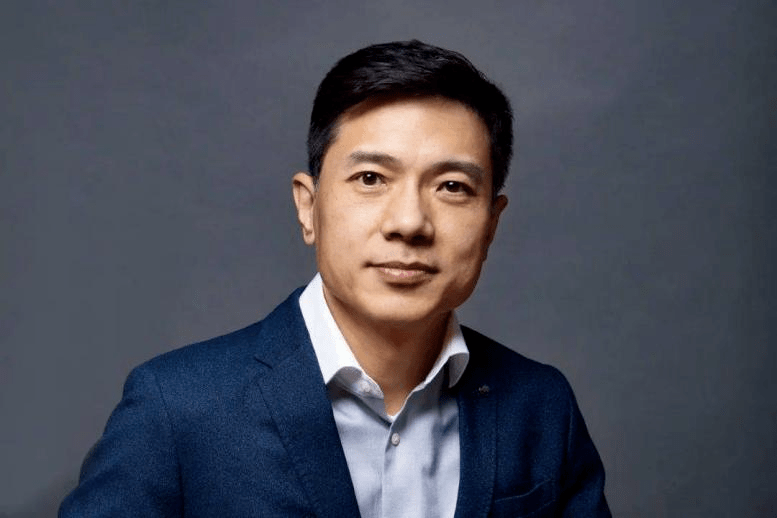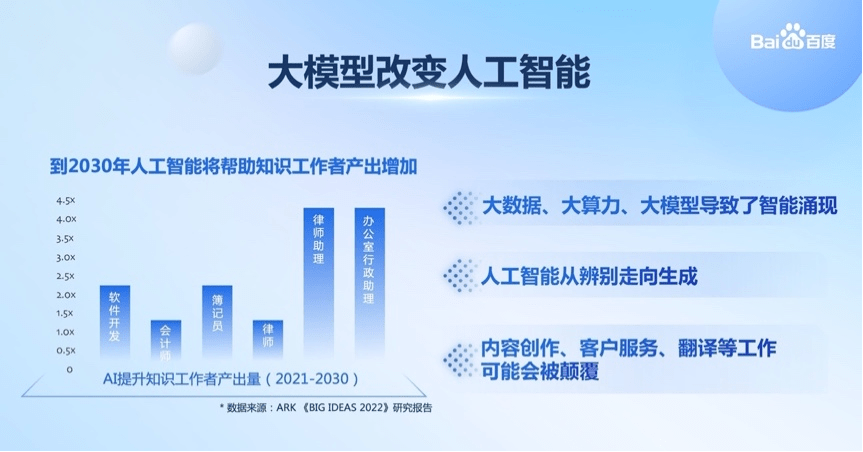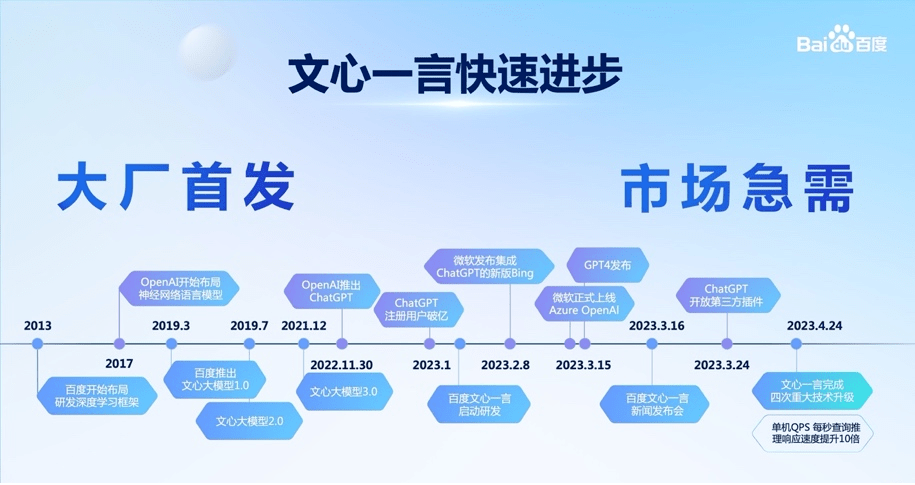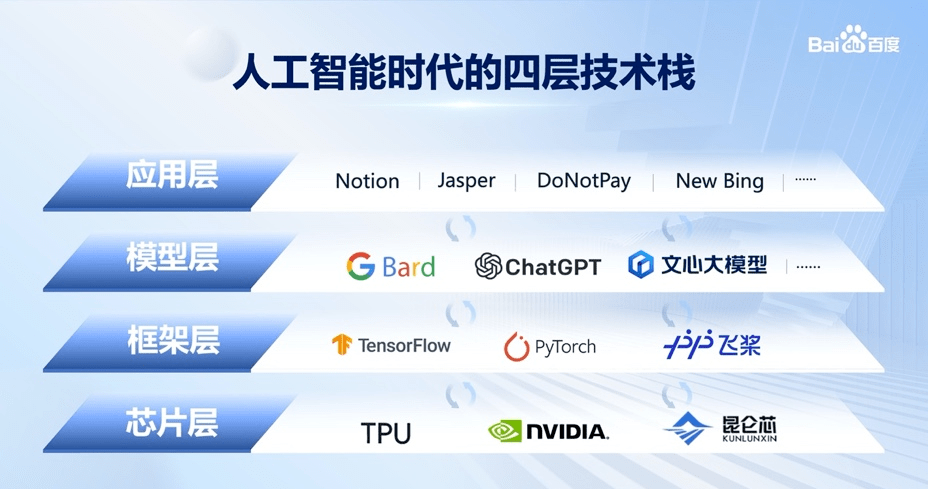Home >Technology peripherals >AI >Robin Li asserts: Artificial intelligence is about to change the world
Robin Li asserts: Artificial intelligence is about to change the world
- 王林forward
- 2023-05-30 11:14:381226browse

Written by/Chen Dengxin
Editor/ Gao Zhi
In recent times, artificial intelligence has once again become the focus of human innovation.
On May 26, 2023, Robin Li, founder, chairman and CEO of Baidu, participated in the 2023 Zhongguancun Forum held in Beijing and delivered a speech entitled "Large Models Change the World".
Successfully compressing human understanding of the entire world proves that large-scale models provide a path to achieving general artificial intelligence. Robin Li said, "We are at a new starting point. This is a new era of artificial intelligence with large models as the core. Large models have changed artificial intelligence, and large models will change the world." ”
Big models are about to reconstruct the future, and thousands of industries will usher in new opportunities. There is no doubt that the “fourth industrial revolution” marked by artificial intelligence is coming, and the world is on the eve of major changes.
Change of Devices: Technological Breakthroughs, Large Models Change Artificial Intelligence
First of all, the era of intelligent emergence is coming.
The next scene of the Internet is artificial intelligence, which has long been the consensus of the industry. However, the implementation of artificial intelligence has not been smooth for many years, and commercialization has been slow.
Today, the resonance of computing power, big models, and big data has given rise to the emergence of intelligence. Robin Li pointed out that in the past, artificial intelligence allowed machines to learn specific skills, and it needed to be taught corresponding knowledge. Those who have been taught may be able to do it, but those who have not been taught may not be able to. After the so-called emergence of intelligence occurs in large models, it will be able to learn skills that have not been taught before. ”
In other words, the turning point of artificial intelligence has been reached.

Secondly, artificial intelligence is moving from discriminative to generative.
The previous artificial intelligence was discriminative, and the choice between "yes" and "no" required the user to input clear information or verify that the data was correct.
When artificial intelligence moves from discriminative to generative, it successfully overcomes the stubborn problems of mechanized operation and lack of flexibility.
As a result, work efficiency has undergone earth-shaking changes.
For example, it takes humans a day to draw a picture and costs hundreds of yuan, but artificial intelligence only takes a few seconds to draw a picture and costs only a few cents.
In other words, artificial intelligence has not only become smarter, but also become more practical.
Once again, artificial intelligence redefines human-computer interaction.
Human-computer interaction is an important entrance to artificial intelligence. This entrance has gone through two iterations, namely from the command line interface to the graphical interface, and then to the natural language interface.
Nowadays, due to the access to dialogue capabilities, the friendliness and functionality of human-computer interaction have been greatly improved.
"When I have a need, for example, I want to check last month, April 2023, for each product line of my company, which products have a gross profit margin that exceeds the pre-epidemic level? Such a topic , it would have taken my assistant half a day and a day to get it in the past. If the computer can understand your natural language, it only takes a second to generate a data table."
At its root, AI’s IT technology stack has undergone fundamental changes.
In the past, the IT technology stack had three layers: the bottom layer was the chip layer, represented by companies such as Intel, Qualcomm, and AMD; the middle layer was the operating system, represented by Windows, iOS, and Android; the upper layer was the application layer, which ran tool software, Office software, game software, etc.
Now, the IT technology stack has four layers: the bottom chip has changed from CPU to GPU, which is more suitable for parallel large-scale floating point operations; the second layer is the framework layer, which is an important support for deep learning and represents Baidu’s flying Paddle, Meta's PyTorch, Google's TensorFlow; the third layer is the model layer, represented by ChatGPT, Wen Xinyiyan, etc.; the fourth layer is the application layer, running native applications in the AI era, etc.
Change of trends: changes in the industry, big models bring three major opportunities
After the breakthrough of large model technology, it also brought about the reshaping of the three major industries.
The first category is a new type of cloud computing company, and the mainstream business model of the cloud has become the MaaS model as a service; the second category is a company that fine-tunes industry models and can provide solutions to industry customers; the third category is based on a large model base. A company that develops applications such as text generation, image generation, audio generation, video generation, and digital humans.
Among them, application development attracts the most attention from the outside world.
After all, AI native applications have sprung up and become a beautiful landscape: DoNotPay is an artificial intelligence platform that provides 24-hour legal services by understanding users’ legal issues and providing personalized suggestions; Speak is an artificial intelligence platform that provides 24-hour legal services. The intelligent foreign language learning platform can simulate various life scenarios to help users quickly master the application of foreign languages...
"Back in 2007, no one would have imagined that there would be Douyin, Taobao, and WeChat today. In the era of AI and large models, such phenomenal applications would also appear. These applications would be developed based on large models."
In a nutshell, in the era of large models, phenomenal AI native applications are bound to be born.
In this context, Baidu is using AI-native thinking to seize the opportunity and seek to reconstruct all Baidu's products, services and workflows.

"There is a saying in the industry that the era of big models is coming, and every product is worth redoing. Baidu plans to be the first company to reconstruct all products, not integration or access. Who is it? Where are the real redoers?
In fact, Baidu unites knowledge and action.
For example, Baidu Search has created new models such as "AI Partner" and "AI BOT" based on large models, turning Baidu Search into the user's personal assistant. Artificial intelligence has moved from "seeing the same thing" to "seeing different things."
For another example, Baidu input method is not only a carrier for text input, but also a "high emotional intelligence communication assistant" to bring users a more intelligent and efficient social experience.
In addition to application development, cloud computing is another important implementation scenario of artificial intelligence.
In the future, users will focus more on intelligent services when choosing the cloud. Artificial intelligence strength will become the primary indicator, while mainstream indicators such as computing power, storage, and network will be delayed.
"In the future, enterprises developing applications based on large models will find that Baidu Intelligent Cloud is the most convenient and fastest, and the cost is still low."
With the fundamental changes in the rules of the cloud market, Baidu Smart Cloud has the confidence and capital to catch up from behind, and the road will become wider, smoother and farther.
After gaining greater say in the industry, Baidu Intelligent Cloud can better empower thousands of industries.
After all, Baidu Intelligent Cloud can not only provide large model services, but also help enterprises develop their own exclusive large models based on its platform, so that every industry has its own large model, moving from "universal" to "vertical". Deeply integrated into the real economy.
Changes in technology: "liberating" workers, mastering generative AI has become a necessary skill
The impact of large-scale models is not limited to the industry, but is also quietly changing everyone. Original occupations will gradually disappear and new occupations will be created.
"In the 1990s, typists were still a decent and in-demand profession. However, with the popularization of computers, the typist profession disappeared permanently. However, the group of programmers spawned by the Internet ushered in an explosion. Twenty Over the years, domestic programmers have grown from hundreds of thousands to eight to nine million today."
This means that working hard is not the best survival strategy. Choice is more important than hard work. Embracing big models has become a must for everyone. If you fail to keep up with the times, you will surely become the tears of the times.
“Are people worried that machines will replace humans? I don’t think we should be aiming to turn machines into humans.”. Machines will be better than humans in many aspects, but machines cannot become humans, and there is no need to transform into humans. We need to co-exist with more intelligent and versatile machines, reinforcing each other, rather than confronting or dichotomizing them. ”
According to a 2019 report by The Economist, the global artificial intelligence and machine revolution is in the middle stages of development, while employment rates in developed economies have soared to record highs, and in Japan and South Korea, which have the highest robot usage rates, the unemployment rate is lowest.
This also proves from the side that new technologies will not bring about large-scale unemployment. On the contrary, the scale of job positions is expanding.
More importantly, large models have reshaped production methods.
Take Baidu’s creator AI assistant team as an example. It exports AIGC capabilities to the outside world and has so far been used by 450,000 creators. It has produced more than 7 million pieces of content and has been distributed more than 20 billion times.
Your future salary level will depend on your ability to write prompt words, not your ability to write code. I have predicted that in 10 years, 50% of global jobs will be artificial intelligence-related positions. ”
It is not difficult to see that raising questions in the future is more important than solving them.
In fact, problem solving is just a skill, and asking questions requires creative imagination.
After all, everyone can ask questions, but it is not easy to be able to ask questions. Whether you can get to the point directly, whether it is valuable, and whether you can explain it in a simple way, tests a person's hard-core ability.
From this perspective, the requirements of large models for talents have changed.
AI changes the world, Baidu’s technological ideals come into reality
It can be seen from the above that Baidu has a thorough understanding of large models, so that it can become the first company among the world's major technology companies to release GPT large model products.
First, investment exceeds 100 billion yuan in ten years.
As early as 2013, Baidu successively established Baidu America Research Institute, Baidu Deep Learning Research Institute, Big Data Laboratory, and Silicon Valley Artificial Intelligence Laboratory, and continued to invest huge financial and human resources.
"Even in the most difficult times, we still persist: when we have 1 yuan, we will invest in technology; when there are 100 million, we will invest in technology; when there are 10 billion, we will still invest Get into technology.”
In the past ten years, Baidu has invested more than 100 billion yuan in artificial intelligence, of which core R&D investment accounted for more than 20% of core revenue for many consecutive quarters.
For example, Baidu’s R&D expenses in 2022 will be 23.3 billion yuan, accounting for 24.42% of core revenue, and the annual net profit will be only 20.68 billion yuan.
As the saying goes, only by accumulation can you make small gains.
In 2019, Baidu released version 1.0 of Wenxin Large Model, and has since continuously iterated to 3.0. Four major technical upgrades were completed in more than a month of internal testing, and the inference cost has been reduced to one-tenth of the original.
More importantly, version 3.5 is on the way.
Second, open up the entire technology chain.
The reason why Baidu’s Wenxin large model came to fruition is because the Feipiao deep learning platform at the framework layer and Wenxinyiyan at the model layer are jointly optimized to promote, achieve, and progress with each other. Under efficient collaboration, more can be obtained High efficiency is an advantage that other players cannot match.
Note that Feipiao Platform is the largest open source deep learning platform in China. It has created 670,000 AI models and served 200,000 enterprises and institutions.
Reflecting on the application scenarios, the results are remarkable.
By intelligently regulating the timing of traffic lights, we can improve urban traffic efficiency by 15% to 30%. On the last working day before the May Day holiday, there was a huge traffic jam in Beijing. From the Second Ring Road to the Sixth Ring Road, everything was red. The only green one was Yizhuang, because more than 300 intersections in Yizhuang were all equipped with Baidu AI information control systems. ”
IDC released the "2022 China Large Model Development White Paper", which shows that Baidu Wenxin Large Model is in the first echelon of the industry, leading in product capabilities, application capabilities, and ecological capabilities.
Third, it is autonomous and controllable.
Baidu is the only company in China with a full-stack AI technology architecture. It has key self-developed technologies at the chip layer, framework layer, model layer and application layer.

In this way, Baidu’s large model has data controllability, framework controllability, and model controllability, which improves its control over the industrial chain, achieves technological self-reliance in international competition, and effectively prevents AI from being used by foreign countries. "Stuck in the neck".
Only in this way can innovation continue to occur and top-level businesses be more prosperous."
In short, as a scientist and entrepreneur, Robin Li has always adhered to the ideal of technology changing the world, and has become the "leader" and "lonely warrior" of the times like Bill Gates, Musk, and Jobs.
Under the leadership of Robin Li, Baidu is reconstructing the future with the help of large-scale models, empowering thousands of industries, further releasing the commercial value of AI, and going all out to "Stars and Seas" to help China's economy create the next golden thirty years.
The above is the detailed content of Robin Li asserts: Artificial intelligence is about to change the world. For more information, please follow other related articles on the PHP Chinese website!
Related articles
See more- Technology trends to watch in 2023
- How Artificial Intelligence is Bringing New Everyday Work to Data Center Teams
- Can artificial intelligence or automation solve the problem of low energy efficiency in buildings?
- OpenAI co-founder interviewed by Huang Renxun: GPT-4's reasoning capabilities have not yet reached expectations
- Microsoft's Bing surpasses Google in search traffic thanks to OpenAI technology

